You read it right. Although we are very much accustomed to portrait dogs with "delicious" bones, they can be very bad for our pets' health! Dogs can't chew animal bones very well and, if they ingest tiny bits of it, those pieces can end up perforating their esophagus or intestines. Besides, this type of food also dries the animal's feces, which is also bad for them. If you want to take good care of your dog, give it food that simulates the shape of a bone, but is made with beef - it can stimulate and clean the teeth in young dogs! ~Ally
0 Comments
That's because of a substance called bergapten, which is present in citric fruits like the lemon. When we eat a lemon or drink its juice, the bergapten is transfered to our skin, enhancing its sensibility. The ultraviolet rays, then, can burn the skin faster if it is exposed to the Sun, causing dark spots to appear. Blisters and inflammation can also arise. ~Ally
According to a recent Harvard study, mankind's first profession was probably being a cook. If you think about it, kind of makes sense. Food making utensils were found along fossils of human ancestors, which suggest that the activity must have arised about 2 million years ago. Besides, the researchers believe that the act of cooking helped to differentiate our species from other mammals. ~Ally
If there's one recent Girl Power character I've been admiring lately, it would definetely be Lagertha, from the "Vikings" series. She is portrayed in tv as a Shieldmaiden and that got me wondering if such women actually existed. The answer is: it is impossible to know for sure. While there are several legends about Viking women who acted as Shieldmaidens (the most famous being Brynhilda/Brunhilde from the Volsunga Saga), and those legends must have been based at least in some real events, there's not enough archeological evidence to confirm that. There are also some historic records about such women but more evidences would be necessary in order to reinforce their actual existence. For many years, when a female Viking skeleton was found alongside a sword or other kinds of weapons, archeologists usually assumed that the male skeleton from that particular grave was missing. And though it isn't necessarily the case, one can not assume that, if a woman was buried with a sword, she must have been a warrior of some kind. The opposite, however - that the woman was a warrior - also can't be discarded. What a mess, huh? With the arrival of Christianity, it is possible that women in Scandinavia (where the Shieldmaiden folklore is more common) were strongly relegated to domestic chores for many centuries. I like to think, though, that there were some women who escaped this forced housewife role and kept practicing with their swords, bows, axes, spears or wathever they fancied, and, most importantly, passing that knowledge to their daughters. ~Ally
Forget about Egypt and India! The most ancient form of agriculture in the world is from Papua New Guinea. Developed approximately 7,000 to 10,000 years ago, it's still the most important activity in the country. About 85% of the population lives from semi-subsistence agriculture. The oldest evidence for that is in the Kuk Swamp area, where planting, digging and staking of plants, and possibly drainage have been used to cultivate food like taro, banana, sago and yam. Europeans brought from the Americas some plant species like sweet potato, cassava and tobacco, between the 17th to 19th centuries. Other crops were introduced later by the Europeans, including watermelon, orange, lemon, coffee, corn and beans, among others. The major agricultural products the inhabitants of PNG grow nowadays include sweet potato, coffee and copra (the dried meat, or kernel, of the coconut). ~Ally
I got preeeeetty excited yesterday while discussing Pecan Walnut Trees... So I decided to research a little more about Pecan Nuts! (I got so happy thinking about nuts that I began to wonder if I was a squirrel in a past life... But more on that later!) Nuts in general are considered dry hard shell fruits, with one or two seeds (the eatable part). In the case of the Pecan Walnut Tree, its fruits are called drupe, which is a fleshy fruit type with a seed. That seed is so adhered to the endocarp (innermost layer of the fruit) that it has to be mechanically separated. In fact, the word "Pecan", in Algonquian, means "a nut that requires a stone to crack". It's shell may be thinner than the common Nut's, but it sure is hard! I usually step on it very gently until I hear a little crack. After that, I peel the shell off with my fingers and voilà! You can notice in my drawing that I referred to the seed as "oilseed". That's because walnut's seeds are very rich in fats, which got people a little bit worried in the past about eating a lot of them. Turns out that scientists found that the oilseeds had so many important substances (such as vitamins A, B1, B2; magnesium; phosphorus and calcium to name a few) that it was worth it. Not to mention that they help controlling the bad cholesterol and, therefore, are good for the heart. If you want to keep an eye out for your weight, though, you might want to consider eating only five nuts a day. Last, but not least, I also found that Indians not only used to eat fresh Pecan Nuts but also used them as an ingredient in soups, cereal cakes, beverages and other foods. Among those aliments, there was "powcohicoria", a fermented "soup" they made out of crushed Pecan Nuts and water, which generated a very intoxicating drink, very popular in tribal festivals! Hummm, I might try that one someday! ~Ally
One of my favorite hobbies in Autumn months is collecting (and, of course, eating) a lot of nuts from my grandmother's farm! They're absolutely delicious, not to mention healthy, because of all the vitamin E, omega 3 and 6, among other substances. What I didn't know about it - and felt pretty stupid because I never noticed it before - is that the period of harvest is from April to June. Although I knew it was during our Autumn season (here in the Southern Hemisphere is from March 20 until June 20 or 21), I never took the trouble of researching or inquiring anyone about the precise time. I also learned that our Walnut Trees are not of the common type, but a species called Pecan Walnut (Carya illinoinensis), which produces smaller and browner nuts than the original Walnut Tree (this one produces those big, yellowish ones). It is an originally North American and/or Mexican species, probably introduced in Brazil (where I live) in the early XX century. Today's learning showed me how one can easily be accustomed with certain things in life, but almost never bothering to know more about those things. And they can make life so much better! Better as in: now I'll be able to pick up nuts in the beginning of the season and that means... More nuts! Yey! =D What do you think about nuts? Are you so enthusiastic about them as I am? Tell me! ~Ally
|

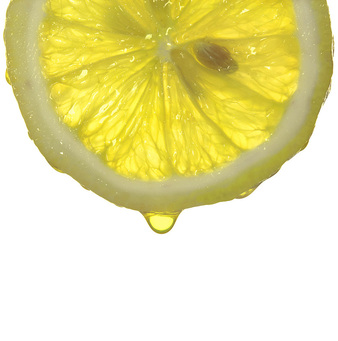


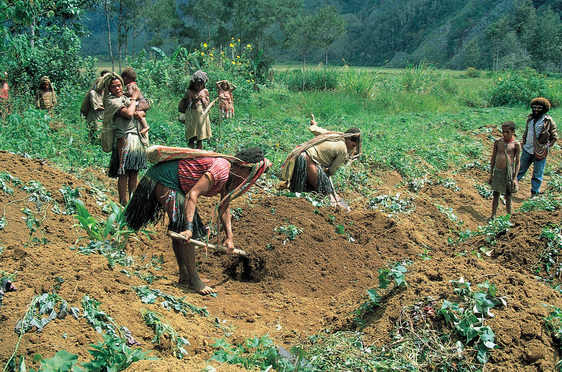
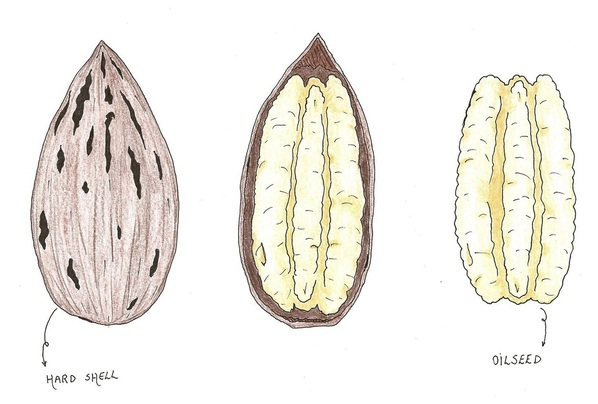
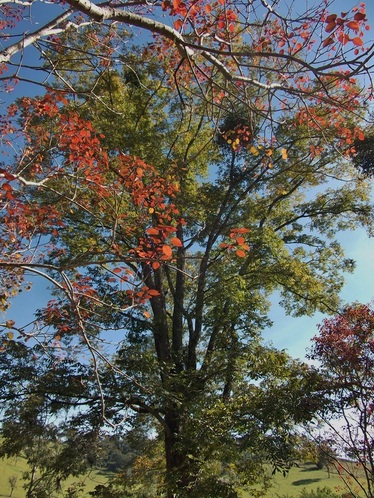
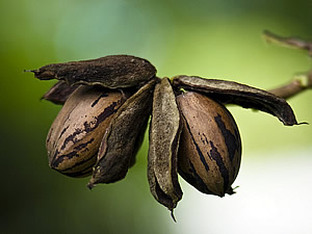
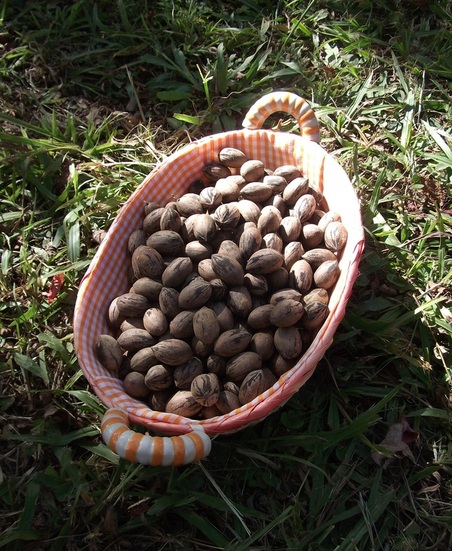
 RSS Feed
RSS Feed